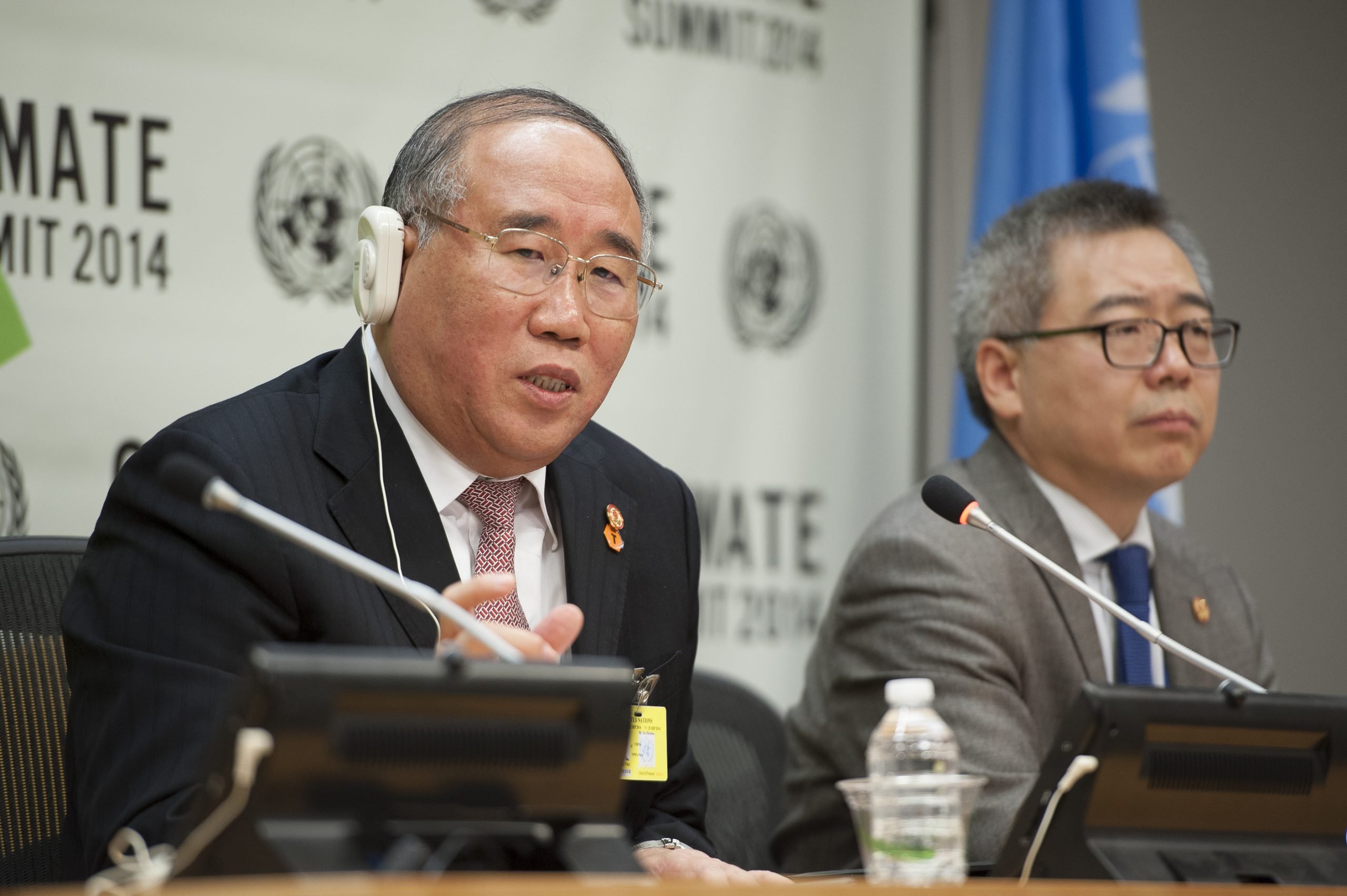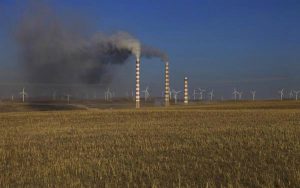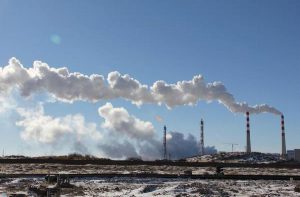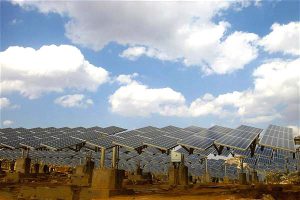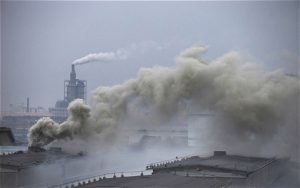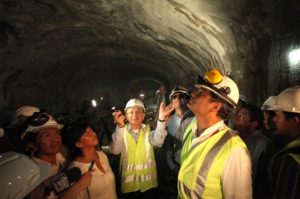Reporter (R): China and the US have reached consensus on emissions targets. How long did the preparations and discussions for this take?
Xie Zhenhua (Xie): This matter had been under preparation for some time. At the UN climate summit in late September Zhang Gaoli, a State Council Vice Premier and Xi Jinping’s special envoy to the talks, held discussions with Barack Obama during which Zhang passed on two important pieces of information: One, that Obama was invited to visit China and attend the APEC summit in Beijing; and two, that China and the US could further cooperate on climate change and make a joint statement on post-2020 climate goals.
From the very start there was a clear understanding that each country would decide on their own targets for that joint statement, which put both sides at ease. Then the climate teams from both nations started to put together a consensus for the leaders, discussing key issues over the phone and in video chats, as well as holding several face-to-face meetings. The joint statement was only finalised the day it was announced.
R: Did China and the US announce their agreement at this point in order to influence the multilateral climate process?
Xie: In a speech to the UN climate summit in late September, Vice Premier Zhang Gaoli, acting as Chairman Xi Jinping’s special envoy, made clear that China supports a new global climate deal in 2015, and that China will contribute to reaching such an agreement – but that it must embody the principles of equity, common but differentiated responsibilities, and respective capabilities.
He also announced China’s 2020 targets for responding to climate change: First, a significant drop in carbon intensity; second, a significant increase in the percentage of non-fossil fuels in the primary energy mix; third, a significant increase in forest stock; and fourth, striving to bring about a carbon peak as early as possible. These goals enjoyed an extremely positive response at the talks.
That speech was a very clear statement of the Chinese leadership’s own views on post-2020 multilateral climate change processes. And in the joint statement, China put forward two quantified targets.
R: The world was taken by surprise by this agreement between China and the US. How do you evaluate this case of cooperation between the two countries?
Xie: A joint statement on climate change by the two heads of state is of huge importance: for promoting transitions and upgrading at home, for promoting multilateral climate change processes, and for promoting cooperation between China and the US. It is also a highlight of the new superpower relationship, and shows our determination to push forward with the global multilateral process.
Climate change is a challenge for all humanity, and all nations must work together in response. It’s not just a bilateral matter, it’s multilateral. Climate change requires a joint response, it requires every nation to take action. A “win-win” approach is the only option – a “zero-sum” attitude would mean failure.
R: Can China meet emissions targets for 2030 with its current mode of economic growth?
Xie: Both the Central Committee and the State Council had clear requirements for China’s targets: these should promote structural reforms and changes in the mode of development, and increase the quality and productivity of economic growth.
Chairman Xi has made it very clear in the past: reducing carbon emissions is not something others are telling us to do, it is something China wants to do. Emissions reductions will be used to promote the transition to green and low-carbon development. So our targets have to bring about transition and upgrading.
Prime Minister Li Keqiang has called for power-saving, emissions-cuts and the response to climate change to be used to reduce energy consumption but also boost economic growth, leading to a ‘win-win’ on both the economy and climate change. So targets need to be achievable with hard work – they need to be tough.
R: So these aren’t purely climate targets. At the national level there’s a deeper intent: to bring about reforms?
Xie: Your understanding is correct. China’s growth is still expansive. But with such large resource and environmental constraints, and so many problems, we ourselves need to set tough and ambitious targets which promote sustainable national development. Otherwise continuing expansive development, with smog already this bad, will leave society as a whole discontent.
When a target is set there’s bound to be comment internationally: is it high or low? Difficult to meet or not? So our target had to pass evaluation both at home and overseas, taking both domestic and international circumstances into account in order to ensure approval.
And if these targets are to drive reforms, there will need to be complementary innovation in mechanisms, in policy, and in reform measures.
First, appropriate state policies will be needed for energy saving and efficiency in industry, construction and transportation, and in the way people live. In particularly economic policies will have to complement those targets, so the market can play its decisive role in allocation of resources.
Second, if the proportion of non-fossil fuel in the energy mix is to be boosted, the state must put the policies in place to encourage and support renewables. You need policy incentives for what you want to encourage, and policy restrictions for what you want to limit.
R: Does the biggest difficulty in achieving these climate targets lie with the energy mix?
Xie: One is the energy mix, the other is that energy consumption needs to be greatly reduced – currently it’s three times the global average. If we double energy efficiency, we can double the size of our economy without increasing energy use.
The key reason for China’s low levels of energy efficiency is that we have too much out-of-date technology and equipment still in use. But once a cap is set new investment will have to use the most advanced energy-efficiency standards, and old equipment and technologies will have to be upgraded.
R: If China wants to succeed in reaching a carbon peak around 2030, what structural changes will need to be made in the economy?
Xie: In terms of economic structure, there will certainly need to be strong development of strategic emerging industries and high and new-tech industries, and there will also need to be development of the service sector. In manufacturing, green and low-carbon technologies and products will be developed. There will be quite big changes in the domestic energy mix.
Also, China’s forest stock will increase greatly. There will be a big change in the forestry structure – currently in many places we have high forest coverage, but low levels of stock, and that structure will change. Originally we talked about quantity of forestry, now it’s time to talk about quality.
The process of realising these targets will mean quite large changes for all sectors: production, the people’s lives, industry, agriculture, urban areas, rural areas.
I expect that by 2030 China will see a lot fewer smoggy days. There will be big changes in environmental quality, in the quality of economic growth, in the people’s ideas about green and sustainable development.
R: There is data showing that when other countries reached a carbon peak, their GDP growth fell to about 3%. How can we achieve a low-carbon scenario and see a carbon peak in 2030, but also maintain an appropriate rate of economic growth?
Xie: There are patterns to economic development, and Chairman Xi has said that China needs to get used to a new normal for economic development. China has seen 30 years of rapid growth, with GDP expanding by about 10% a year, but that’s already a marvel – the economy can’t grow that fast forever. Once the economy becomes large, growth is bound to slow.
In the past growth was investment-driven, with resources and the environment sacrificed. Now we’re at a stage where that debt needs to be repaid, where we need a society that conserves resources and is environmentally friendly.
R: Research groups have said that China can, even under a low-carbon scenario, maintain rapid GDP growth. Would you agree?
Xie: I think that as time goes on and the size of the economy increases, GDP growth is bound to slow.
But to what extent? We’ve used different approaches to calculate this, and the common outcome is that overall current rates of growth cannot be maintained. In the past it was 10%, now it’s 7.5%, and I don’t think it’s likely that we can maintain that speed in the future.
R: Is there a possibility that, like the developed countries, we will achieve our climate target in 2030 but see growth fall to 3%.
Xie: No, it ought to be higher than that.
R: Could you predict whether or not China will meet the commitment it made for 2020 emissions cuts?
Xie: China is currently working hard to achieve its 2020 goals. As of 2013 it had completed 28.5%, and there’s seven more years in which to reduce carbon intensity by 40%-45% on 2005 levels. To put it plainly, China can do it.
China has paid a price for this. In some places in 2009 and 2010 they even turned off power supplies to meet emissions targets. And we have our five-year plans as well as long-term targets, and the five-year plans are passed by the National People’s Congress and are legally binding. Targets are set across the provinces, and then again at the local and city level, and for major polluters. We are making very honest efforts.
R: Could you talk about China’s adaptation to climate change?
Xie: China is one of the biggest victims of climate change. On average over the last ten years we have lost 2,000 lives and 200 billion yuan a year to extreme climate events. Those are the direct losses, environmental effects have been even larger. With such huge direct losses, adapting to climate change becomes extremely important.
Adaption and mitigation complement each other – the more you mitigate, the less you have to adapt. But if you don’t mitigate then you’ll cause damage, and the long term impact of adaptation will be more significant.
So both are important. The developed nations don’t fully recognize this, they just call for emissions reductions and don’t like to talk about adaptation. Why is that? Because the climate damage we’re seeing currently is mainly due to unrestricted emissions by the developed nations in the past. So when it comes to adaptation, it should be the developed nations that compensates the developing world for those costs. The developed world doesn’t want to talk about adaptation, as they don’t want to pay for it. That’s the root of it.
R: What hopes do you have for the current climate meetings in Lima and in Paris in 2015?
Xie: Lima will be key to deciding whether Paris succeeds or fails. There needs to be a result next year, a deal – and this year’s meeting is in preparation for that.
At Lima an initial consensus will be formed on that deal: the framework, the principles, the main factors, the issues to be solved. There will be many disagreements, and those will have to be resolved one by one over the next year up until the Paris meeting. I anticipate that at Lima there will be plenty of disputes. And everyone’s views will be reflected in the draft of a new agreement.
This is an edited version of an article first published in Caixin New Century Weekly
